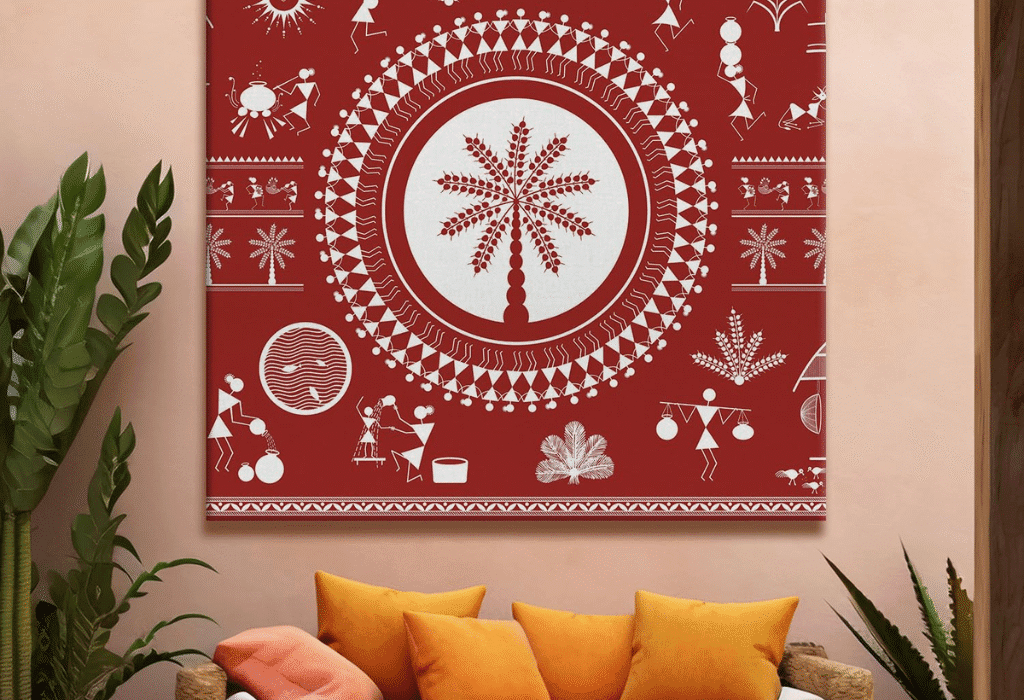
Warli Art
Introduction
The indigenous Warli tribes of Maharashtra, India, are the originators of the captivating tribal painting style known as “Warli Art.” This art form, which is renowned for its symbolic storytelling and minimalistic beauty, uses straightforward geometric patterns to capture the essence of nature, daily life, and rituals.
The history, methods, symbolism, contemporary adaptations, and even how to make your own Warli paintings are all covered in this article.
What is Warli Art?
The Warli tribe from Maharashtra’s Sahyadri Hills produced a type of tribal painting known as “Warli Art.” The use of simple shapes like triangles, circles, and lines to represent intricate scenes from life, rituals, and folklore is what distinguishes this art form.
Warli paintings, which are typically created with white pigment on a mud-based wall or paper, are monochromatic in contrast to other traditional Indian art forms. Warli art is timeless because of its simplicity and unvarnishedness.
History of Warli Painting
Although Warli painting has been around since 2500 BCE, it wasn’t until the 1970s that artists like Jivya Soma Mashe popularised it.
Originally, during festivals and marriage ceremonies, Warli art was painted on the walls of tribal huts. These works of art, which were frequently devoted to the fertility goddess Palaghata, had profound spiritual and cultural significance in addition to being purely ornamental.
Key Elements and Symbols
The beauty of Warli art lies in its use of symbols and patterns that reflect daily tribal life. Each symbol tells a story:
Circle – Represents the sun and moon
Triangle – Represents mountains, trees, and humans
Square – Sacred enclosure or piece of land
Common Motifs:
Farming scenes
Animals like cows and deer
People dancing in circular formations (tarpa dance)
Marriage rituals
Festivals and hunting scenes
These elements combine to create a narrative artwork that expresses the tribe’s connection to nature and social structure.
Traditional Tools and Techniques
Natural materials have long been used by Warli artists to produce their artwork.
Here’s how:
- Surface: Mud-plastered walls and cow dung
- These days, handcrafted canvas or paper
- Paint: White pigment prepared with water and rice paste
- Gum is occasionally added for consistency.
- Brush: A brush-like tip made from chewed bamboo sticks
- This environmentally friendly painting method maintains Warli art’s sustainability and authenticity.
Themes in Warli Art
Warli paintings are more than just doodles.
These artworks are based on themes and show:
- Agriculture: planting, harvesting, and grazing cattle
- Social gatherings, such as weddings and communal feasts
- Religious symbolism: spiritual symbols, gods, and rituals
- Music and dance, particularly the Tarpa dance, in which men and women spiral through the air
How to Make Warli Art: A Beginner’s Guide
If you’re inspired by the elegance of Warli art, you can try making your own with a few easy steps.
You’ll Need:
Brown sheet or handmade paper
White acrylic color or correction pen
Pencil for sketching
Ruler and eraser
Steps:
- Choose a theme – dance, farming, or animals
Draw a border using triangle patterns
Sketch basic human and animal figures using triangle and circle shapes
Fill details like trees, huts, and sun/moon
Go over the sketch with white paint or pen
Let it dry and frame your artwork!
Warli Art in Home Décor
Looking to add a touch of Indian tradition to your living space? Warli art fits beautifully into modern décor themes.
Décor Ideas:
Warli art wall hangings
Cushions and bedding with Warli prints
Painted pots and lamps
Framed Warli canvas paintings
Its monochrome design complements minimalist interiors and brings a rustic, cultural vibe to your home.
Conclusion
Warli art is a cultural legacy that has been passed down through the ages and goes beyond simply being a painting style. It imparts lessons on storytelling, simplicity, and the close bond between people and the natural world.
Understanding and enjoying Warli art helps you become more connected to India’s ancient customs and tribal heritage, regardless of your background as an artist, designer, student, or enthusiast.
